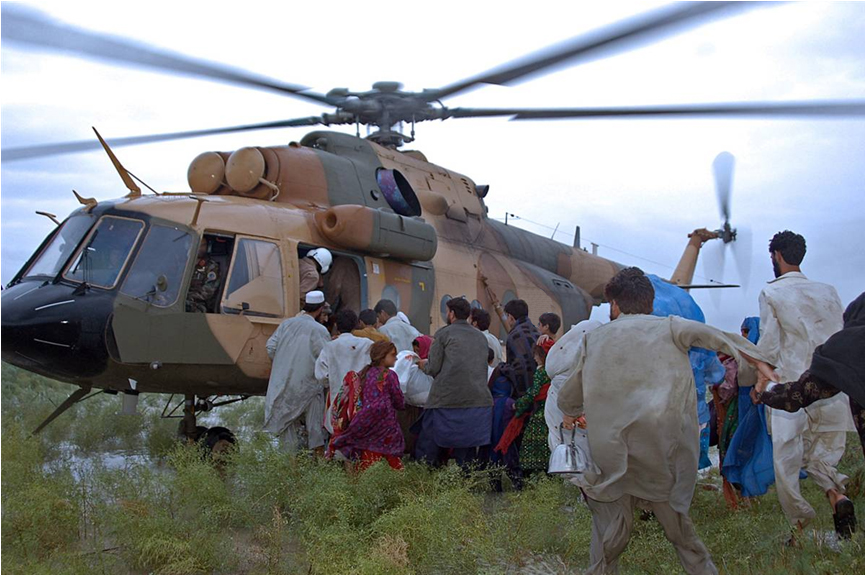

Linking unlikely allies for mission success

By Susan L. Follett
FOTF: What do you do in the Army?
VERGEZ: I am the first Project Manager (PM) for the NSRWA PMO, which was established three years ago. We field, sustain, and support rotary wing aircraft used by the U.S. military that are not in DOD’s inventory. That includes more than 300 helicopters, including the Russian Mi-17 and the MD530F, used in DOD operations in Afghanistan, Iraq, and 38 other countries.
FOTF Editor’s Note: The NSWRA PMO was established by the Under Secretary of Defense (USD) Acquisition, Logistics and Technology (ALT) to consolidate all nonstandard rotary wing aircraft under a single program. Among the office’s responsibilities were to address immediate and long-term safety and sustainment issues for the Mi-17, a Russian-made plan flown by U.S. and coalition forces in Afghanistan and Iraq. Col. Vergez recently stepped down from this position, and Mr. Kelvin Nunn, his deputy, is now the acting PM.
FOTF: What were some of the challenges you faced?
VERGEZ: One of our first priorities was to establish a direct relationship with Russian equipment manufacturers, and to develop and maintain a standard of support for all Mi-17 operations involving U.S. and coalition forces. As we draw down our troops in Afghanistan, leaving behind a well-supported Air Force is a key part of Afghan security, and the Mi-17 will play a big role in that. The warfighters who fly these aircraft need to know that they’re governed by the same set of safety and airworthiness guidelines that govern our standard aircraft.
In the past, nonstandard rotary wing helicopters were acquired through third-party brokers. That meant dealing with a lot of different entities and numerous pass-throughs that affected cost, quality, and procurement cycle times. Once our PMO was established, we worked directly with the suppliers, and applied the principles for acquiring standard aircraft to the nonstandard fleet. It represented a pretty significant paradigm shift for all of us. But we’re now seeing it pay considerable dividends: We’re no longer paying across multiple layers of suppliers, so our costs have decreased, and by working directly with the manufacturer, we know that the aircraft meets our safety and airworthiness guidelines.
FOTF: What has surprised you the most? What have you found most rewarding?
VERGEZ: By far the most rewarding aspect of my work is the strides we’ve made in working with the Russian federation. The relationship is mutually beneficial: we want to ensure that our coalition partners have safe, well-maintained aircraft, and Afghanistan represents a solid market opportunity for Russian aircraft manufacturers. What we shared was a mutual desire to do what was right for our warfighters.
Throughout the process, what surprised me the most was how similar Russian officials are to us. When I joined the Army, the Cold War mentality was very much alive. But in working with them on this project, I’ve come to see that they have the same pride in their nation and desire to serve their country that we do.
FOTF: What is your greatest satisfaction in being part of the Army?
VERGEZ: My greatest satisfaction is being part of something bigger than myself. I understand that the program we put in place for acquiring nonstandard aircraft will be used to address acquisition and safety problems related to ammunition in Afghanistan. Knowing we’ve left behind that legacy is very rewarding. I’m proud of the work that we did to build this partnership and leave an enduring capability for future generations of Soldiers.
On a personal level, I’ve been an aviator for 25 years. I love to fly, and like all pilots, I have a passion for safety. So, knowing that our work will ensure the safety of other pilots is also very gratifying.
For more information, visit https://www.peoavn.army.mil/SitePages/Home2.aspx.
- “Faces of the Force” is an online feature highlighting members of the Army Acquisition Workforce. Produced by the U.S. Army Acquisition Support Center Communication Division, and working closely with public affairs officers, Soldiers and Civilians currently serving in a variety of AL&T disciplines are featured every other week. For more information, or to nominate someone, please contact 703-805-1006.







